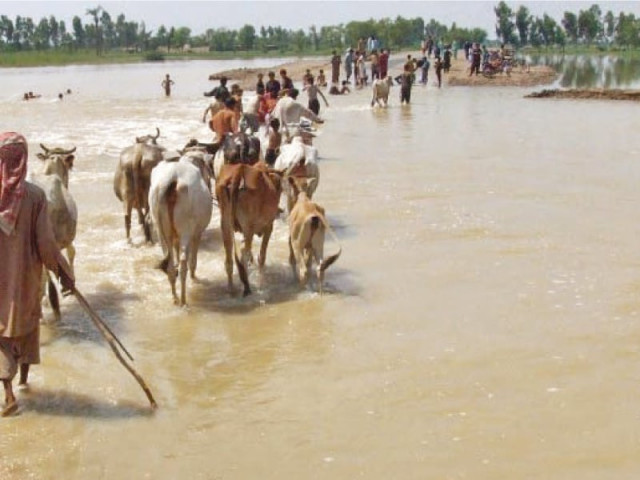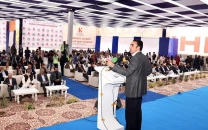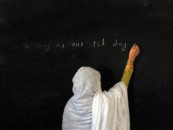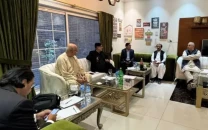Precautionary measures: ‘Embankments should be removed ahead of monsoon rains’
Civil society says three consecutive disasters reflected lack of coordination on part of the govt.

Flood-affected residents of a submerged village carry their belongings and livestock after the flood in 2012. PHOTO: FILE
This observation was made by representatives of civil society organisations and the Sindh People’s Commission on Disaster Prevention and Management (SPCDPM) as they expressed concern over the deteriorating condition of the irrigation infrastructure and the poor arrangements in place to avert any disaster ahead of the monsoon rains and floods.
They were addressing a press conference at the Karachi Press Club on Thursday.
Pakistan Institute of Labour Education and Research (Piler) joint director Zulfiqar Shah, Health and Nutrition Development Society (Hands) chief executive Dr Tanveer Ahmed, Pakistan Fisherfolk Forum (PFF) general secretary Saeed Baloch and Strengthening Participatory Organisation’s (SPO) Ellahi Bukhsh were among those who spoke.
They said that the occurrence of three consecutive disasters reflected the lack of coordination and preparedness on the part of the government.
The members were of the view that despite massive devastation during the last two consecutive floods, mainly because of the breach of embankments and the set up of private bunds (dykes inside river), the state seemed to have no definite policy to protect the crops.
They pointed out that there had been frequent reports of massive corruption in the irrigation department, which received $234 million from the Asian Development Bank (ADB) on account of the repair work on the irrigation system during the last two years.
Waving the official documents, the civil society members said that despite tall claims by government the repair work of embankments in Flood Protective (FB) and Suprio Dykes that fell in Kamber Shahdadkot and Dadu districts was incomplete. Same is the case with Indus River embankments in Jati and Sejawal. “Residents have protested against the poor repair of the Rohri Canal embankment. Some members of the civil society organisations have filed a petition to focus the attention towards the absence of action against encroachments inside the river in Sukkur and Thatta. Likewise, Larkana has been noted for vast illegal construction along the river beds,” they said.
“Apart from the inability to ensure the removal of encroachments, the repair work of the state-built dykes has been slow and incomplete,” said Piler’s Shah.
He said that Rs 300,000 compensation made to the heirs by the revenue department was not based on the Watan Cards model, and it left out many families who lost their members in flood in the province. A report earlier this year noted that the release of Rs41.7 million still awaited approval from the government.
Shah said there had been no action on the part of the government of Sindh or the irrigation department to hold the concerned officials responsible after the Supreme Court’s inquiry into the breaches in embankments during the 2010 floods. During a recent hearing, a fake certificate with reference to the flood commission report was presented by the irrigation secretary Sindh to the Supreme Court bench. The SC also noted lack of implementation of the floods commission report.
Shah said that disaster risk reduction needed to be made a priority with a strong institutional basis for its implementation. A system for identifying, assessing, and monitoring disaster risks and ensuring early warnings needs to be pursued.
Published in The Express Tribune, July 12th, 2013.

















COMMENTS
Comments are moderated and generally will be posted if they are on-topic and not abusive.
For more information, please see our Comments FAQ